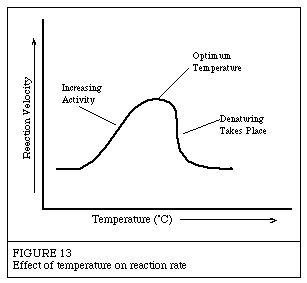Some algae I collected over the summer (July 25th). The creek is almost all dried up at the moment and we can’t find any right now, but I want a student to see what she can find out about it.

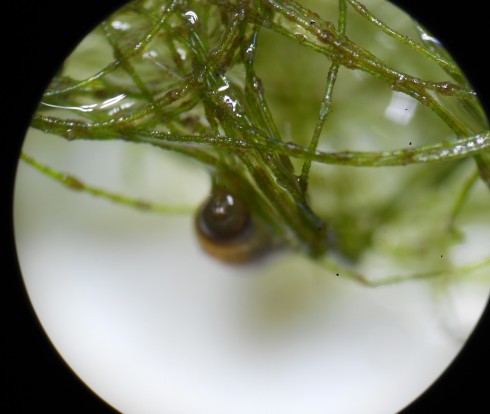
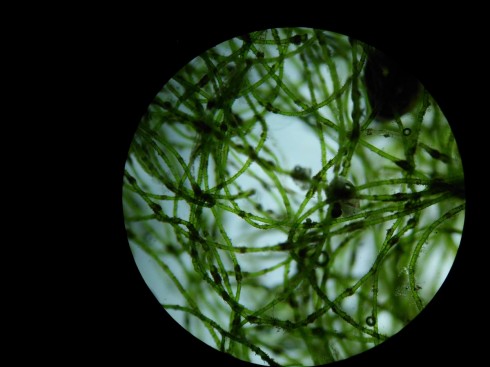
Middle and High School … from a Montessori Point of View

A parent (thanks Dr. E) found this old projecting microscope at a microscope store in town. The optics are arranged upside-down relative to normal: the light is at the top and the objective lenses are upside-down and below the slide. The light coming through the objective is reflected onto the screen using a simple mirror.
It needs a dark room to see some of the more detailed, lightly stained. However, higher-contrast slides show up reasonable well in our classroom, despite its large, unblocked windows.

I’m taking a small group of kids hiking/cross-country running for Physical Education this quarter. With the heat wave of last week, and having to clear the trail up the hillslope, today was the first day we actually got all the way to the top of the ridge. On our way back down, one of my students had stopped to look at a frond of tiny, pretty flowers when she spotted this beautiful, yellow spider with its brilliantly, iridescent catch. We brought them back to the lab to look at it under the microscope. It’ll also be interesting to observe what the spider does with the fly.
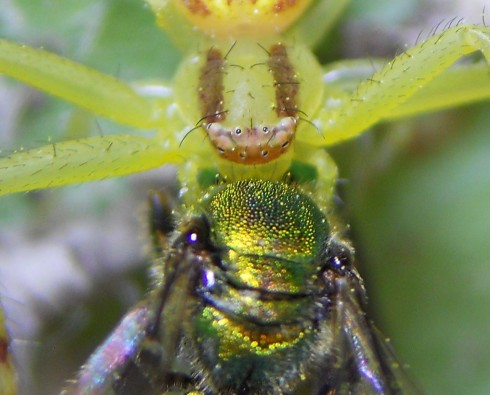

One of my biology groups is doing a presentation on the immune system in the next few days. They decided that they needed to wander around the school asking any teacher they could find for interesting games they could use for a presentation. Mr. Schmitt, our new math teacher, recommended the neat video above of a white blood cell hunting down a bacterium. It’s pretty dramatic.
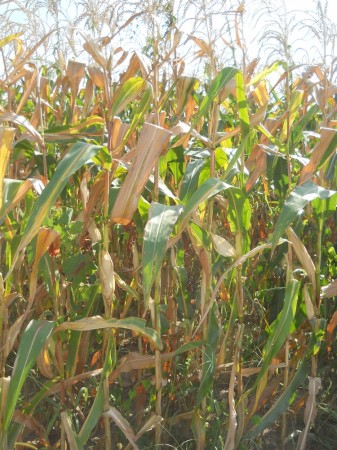
This year we signed up for a CSA – Lee Farms in Truxton, Missouri – and we had the chance to visit this Sunday.
CSA stands for Community Supported Agriculture, and the way it works is that you sign up (and pay) ahead of time and the farmer gives you a box of produce from the farm every week for the growing season (May to October in Missouri). It helps the farmer by providing some more stable income, since the CSA members pay the same amount whether it’s a good season or not. The members get an interesting variety of fresh produce every week.
It was neat to see the farm, especially since they’re trying to minimize the amount of fertilizer and pesticides they’re using by working with etymologists and agriculturalists from the universities in the area. It would be a good place to visit with a class.
BodyXQ has one of the most impressive interactive apps of the heart that I’ve yet seen.
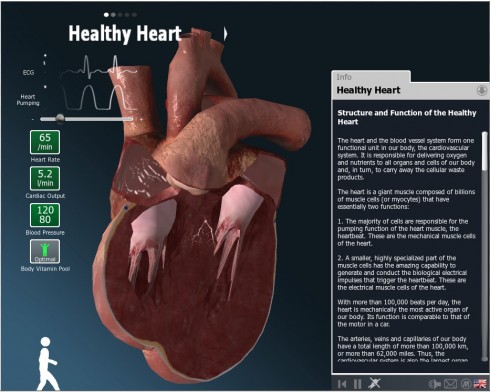
You can explore the heart in 3D while it’s in motion. You can see the valves open and close, while hearing the beat. I’m going to have to show this to the class tomorrow.
(Disclaimer: No actual pins were used.)
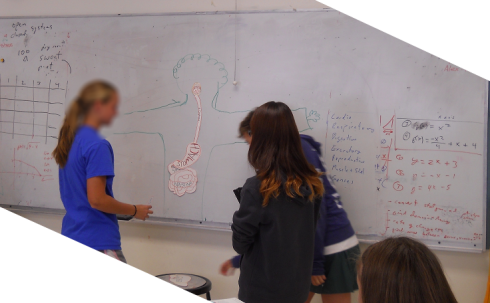
One of my student groups came up with an excellent way of presenting the organs of the digestive system in Biology class. They drew an outline of a person on the board and then had students in the audience stick drawings of the different organs onto the outline.
What worked particularly well was that they’d have someone from the class pin on the organ, and then they’d talk about it. This gave the presentation a nice rhythm, with a little break between each item.

While discussing homeostasis in biological systems, one of my biology students asked why humans could only survive with only a very narrow range of body temperature. Part of the answer is that the human body is a complex system, and the chemical reactions rely on enzymes that only work effectively within a narrow range of temperatures.
Worthington Biochemical has detailed (probably too much so for our purposes) introduction to enzymes: how they work, how they’re named, etc.
In particular, they have this useful graphical diagrams showing how enzymes have an optimum temperature and pH.
